Tucked away in the rugged landscapes near Wellington, Utah, Nine Mile Canyon is a destination that flies under the radar — and that’s part of its magic. Known as “the world’s longest art gallery,” this 46-mile canyon is packed with rock art, granaries, and remnants of ancient civilizations. Yet it’s not a national park, monument, or even a widely advertised attraction. You’ve got to seek it out — and that’s exactly what Lisa and I did.
- Why Is Nine Mile Canyon 46 Miles Long?
- Why Visit Nine Mile Canyon?
- Who Created the Petroglyphs?
- Driving Route and Notable Stops
- 🪨 Mile 26.7 – First Petroglyphs
- 🐎 Mile 31.3 – Man Leading Horse Petroglyph
- ⚖️ Mile 32.5 – Balance Rock and “The Juggler”
- 🏚️ Mile 33.3 – Abandoned Homestead
- 🦉 Mile 35 – Owl Panel
- 🧗 Mile 35.9 – Cliffside Petroglyph Panel
- 🧱 Mile 41.8 – The Granary
- 🦌 Rasmussen Cave
- 🧺 Picnic and Hiking at Daddy Canyon Complex (Mile 44)
- 🐃 Mile 46.1 – Big Buffalo Panel
- 🎯 The Grand Finale – “The Great Hunt” Panel
- Book Recommendation
- How to Get to Nine Mile Canyon
- How Long Does the Trip Take?
- Final Thoughts: Is Nine Mile Canyon Worth It?
- Let’s Hear From You!
This post contains affiliate links. As a participant in Amazon Associates and various affiliate programs, we are compensated when qualifying purchases are made through our referral links at no additional cost to you. Full Disclosure
During our stay at Blue Cut RV Park, the owner handed us a well-worn sheet listing 80 stops along the canyon route. That was our treasure map, and we set off in search of the incredible petroglyphs carved into the canyon walls by the Fremont and Ute peoples. What followed was one of the most memorable day trips we’ve ever taken in Utah.

Why Is Nine Mile Canyon 46 Miles Long?
Despite its name, Nine Mile Canyon stretches approximately 46 miles from the canyon entrance to its end near the ghost town of Harper. So what gives?
The Origin of the Name
The name “Nine Mile Canyon” doesn’t refer to the canyon’s length. Instead, it likely dates back to the late 1800s, when John Wesley Powell’s survey team was mapping the region. One of his topographers used a nine-mile transect line during their mapping — and the name stuck.
So it’s not about the distance through the canyon — it’s about a segment used in early cartography.
Why Visit Nine Mile Canyon?
If you’re a fan of remote travel, archaeology, or indigenous history, Nine Mile Canyon belongs on your itinerary. This isn’t your average scenic drive. It’s a full-blown, self-guided scavenger hunt where the prize is awe-inspiring rock art dating back over 1,000 years.

We saw:
- Hundreds of Mule Deer
- Pronghorn Antelope
- Free-range Cows, Horses, and Wild Turkeys
- Dozens of petroglyph and pictograph panels — some marked, most hidden in plain sight
It’s not crowded — we barely saw another car for miles — and it offers a genuine sense of exploration.
Who Created the Petroglyphs?
The original artists were the Fremont people, who lived in the canyon from roughly A.D. 950 to 1250. They left behind:
- Petroglyphs (rock carvings)
- Irrigation ditches
- Earthen lodges
- Granaries still visible today
Later, the Ute people added their own layer of art in the 16th century and beyond, including scenes of horse-mounted hunters, which date to the 1800s.
Driving Route and Notable Stops
We started our journey from Wellington, Utah, at the Miller Travel Center Chevron, setting our odometer to zero at the corner of Hwy 6/191 and Soldier Creek Road. From there, Soldier Creek Rd transitions into Nine Mile Canyon Rd — just keep driving straight.
⚠️ Important Tip: There are no services after leaving Wellington or Myton. Fuel up, pack water, and bring plenty of snacks.
Here are some of our favorite stops:
🪨 Mile 26.7 – First Petroglyphs
The first carvings come into view here. A few signs help you spot them, but most are unmarked. Look for blackened rock surfaces near the road.
🐎 Mile 31.3 – Man Leading Horse Petroglyph

One of the more unique panels: a figure walking beside a horse with a rider.
⚖️ Mile 32.5 – Balance Rock and “The Juggler”

Balance Rock alone is worth a photo stop, and the petroglyphs here are a nice bonus.
🏚️ Mile 33.3 – Abandoned Homestead

Explore old buildings, rusted trucks, and hidden rock art behind a vintage pickup. It’s not the best panel artistically, but the setting is unforgettable.

🦉 Mile 35 – Owl Panel

Across from the county rock storage shed is a small parking area. Look for owls and abstract figures etched into the canyon wall.


🧗 Mile 35.9 – Cliffside Petroglyph Panel

Unmarked and high up, this one required a steep scramble but was worth it for the lines, cranes, and goat figures.
🧱 Mile 41.8 – The Granary

Look for a viewing tube aimed at a circular granary high on the cliff. Bring binoculars for a better view!

🦌 Rasmussen Cave

Inside are petroglyphs and pictographs, including a once-beautiful deer image tragically vandalized with a “No Trespassing” message.

Please respect the site. Do not touch or add to the artwork. It’s heartbreaking to see ancient history defaced.
🧺 Picnic and Hiking at Daddy Canyon Complex (Mile 44)
This is a great rest stop with:
- Parking
- Restrooms
- Picnic tables
- A short ½-mile interpretive trail with plenty of unsigned petroglyphs

As you hike, scan the canyon walls about 20 feet up. Some of the best panels are just off the main trail, especially along the right side near the cliff.




🐃 Mile 46.1 – Big Buffalo Panel
A must-see! Look for the signed parking area. Nearby is a gap between the cliff and a fence where a trail leads to more artwork.
Caution: We were stopped by someone claiming it was private property. Odd, since there were BLM markers. Later, we returned when the group was gone and found some fascinating pictographs safely before reaching the “No Trespassing” signs past the Big Buffalo.
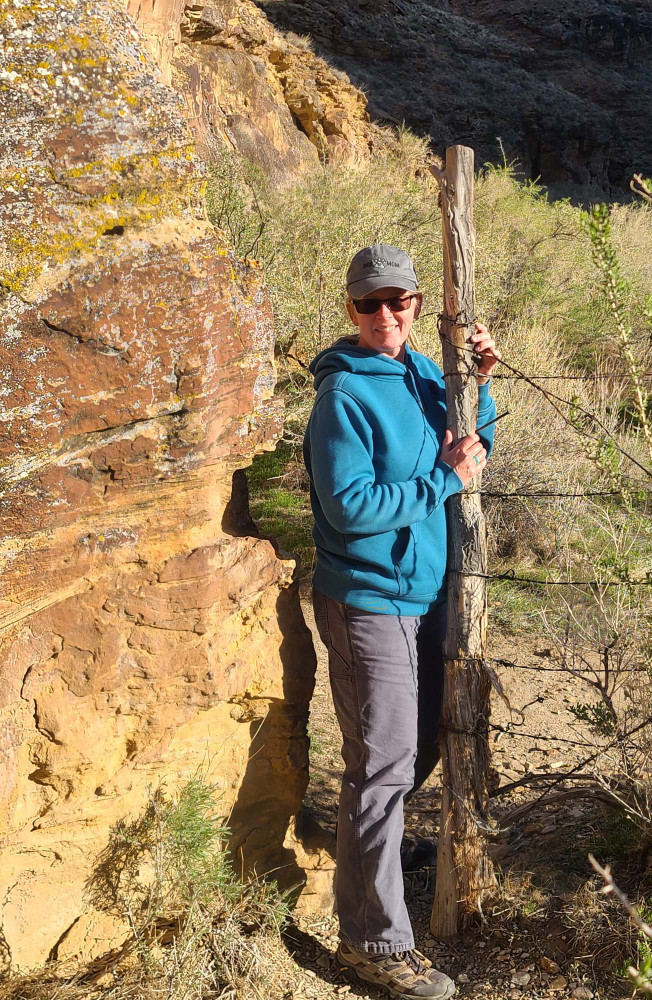



🎯 The Grand Finale – “The Great Hunt” Panel
This is the most famous and detailed panel in Nine Mile Canyon. Scholars think it might depict an actual event. It’s intricate, beautifully preserved, and easily one of the most iconic petroglyphs in Utah.

Book Recommendation
Nine Mile Canyon: The Archaeological History of an American Treasure
by Jerry D. Spangler
If you’re fascinated by the rock art, ancient cultures, and deep-time history carved into the walls of Nine Mile Canyon, this book is a must-read. Archaeologist Jerry D. Spangler delivers an in-depth and accessible account of the canyon’s importance — not just as a scenic byway, but as a cultural legacy shaped by the Fremont and Ute peoples.
This well-researched book dives into:
- The canyon’s unique role as a transportation and trade corridor
- Detailed interpretations of major rock art panels, including “The Great Hunt”
- Fremont agricultural practices, settlements, and spiritual life
- The impact of modern development and the push for preservation
Whether you’re planning a visit or reflecting on a past trip like ours, this book adds depth and context to what you’re seeing — helping you understand not just the art, but the people behind it.
How to Get to Nine Mile Canyon
Nine Mile Canyon is most easily accessed from Wellington, Utah. It’s not a marked tourist route with signs every mile — this is a remote, self-guided adventure. Here’s everything you need to know to get there and enjoy the journey.
From Wellington, Utah (Recommended Route)
- Start in Wellington
Head northeast out of town on US-191. - Turn onto Soldier Creek Road
About two miles outside of Wellington, look for the intersection near the Chevron station. This is where Soldier Creek Road begins. Reset your odometer here — this becomes Nine Mile Canyon Road as you continue driving straight. - Drive approximately 21 miles
At around mile 21, you’ll officially enter Nine Mile Canyon. From here, the rock art begins appearing frequently, and the adventure truly begins. - Continue through the canyon
The main stretch of petroglyph-rich canyon is roughly 46 miles long. Most notable stops are listed by mile markers, so keep an eye on your odometer.
Important Notes Before You Go
- Fuel Up First: There are no gas stations in the canyon. Make sure your tank is full in Wellington or Price.
- Pack Essentials: Bring water, snacks, a picnic lunch, and binoculars. There are very few amenities once you enter the canyon.
- Grab a Brochure: If you’re staying at a local RV park or gas station, ask if they have a guide with mile-by-mile petroglyph sites. Or use Carbon County’s 9-Mile Mini-Book
- Download an Audio Guide: If possible, download an offline map or an audio tour app before heading out, as cell service is spotty to nonexistent.
Optional Scenic Loop Return via Myton
Instead of backtracking to Wellington, some travelers choose to continue through the canyon and exit toward Myton. Be aware that this stretch includes dirt roads and may not be ideal for all vehicles or in poor weather. Plan accordingly and check road conditions in advance.
From Price, Utah
If you’re staying in Price:
- Drive south on Highway 6/191 for about 7.5 miles to reach Wellington.
- Follow the same route from there by turning onto Soldier Creek Road.
Nine Mile Canyon is a backcountry treasure that rewards preparation. Whether you’re a history buff, photographer, or curious traveler, the drive through this rugged landscape is unforgettable. Just be ready to go offline and embrace the solitude.
How Long Does the Trip Take?
Our Nine Mile Canyon drive took about 6½ hours, including many stops, hikes, and time spent searching for panels. You could do it faster, but I’d recommend giving yourself plenty of time — and still, you’ll want to come back.
Final Thoughts: Is Nine Mile Canyon Worth It?
Absolutely. If you love hidden gems, ancient cultures, and a quiet escape into the wilds of Utah, Nine Mile Canyon is a must-do. The solitude, the history, and the thrill of discovery make this a journey we’ll never forget.
It’s not polished or commercialized — and that’s what makes it special. Just you, the rocks, and the stories they tell.
Let’s Hear From You!
Have you been to Nine Mile Canyon or another hidden historic gem? Drop a comment below — we’d love to add your recommendations to our growing list of off-the-beaten-path adventures.
Affiliate Tip: If you’re planning a trip like this, binoculars and a good Utah road atlas are must-haves.
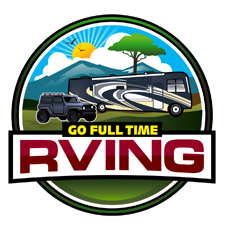
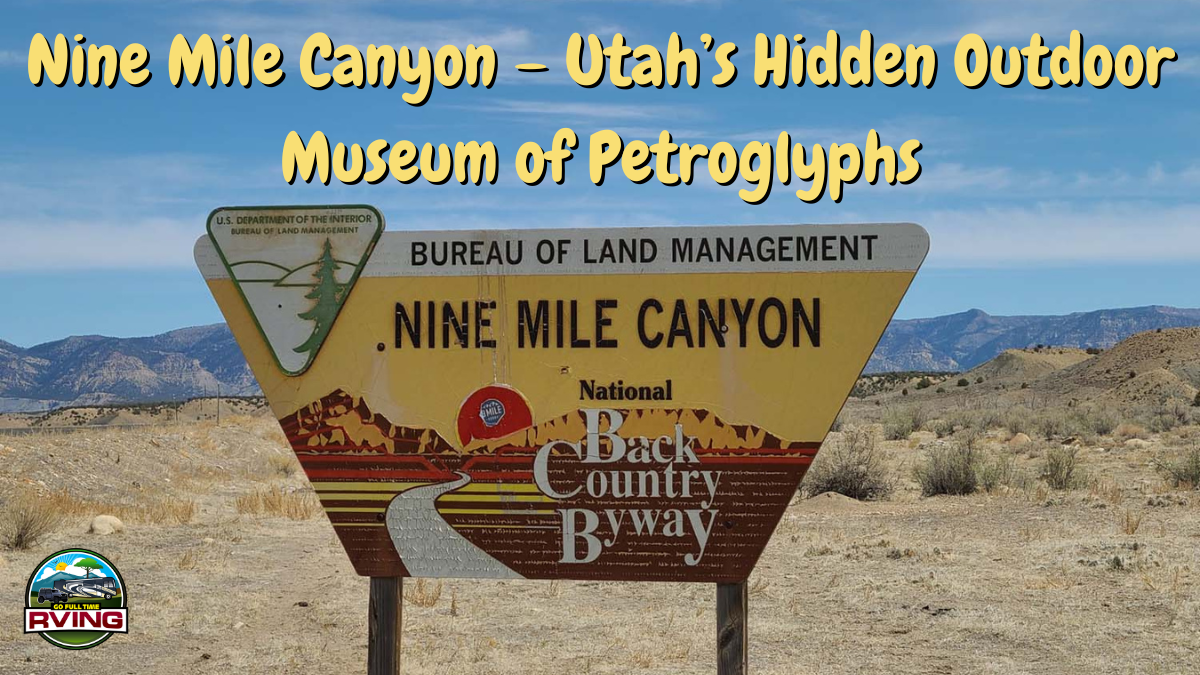
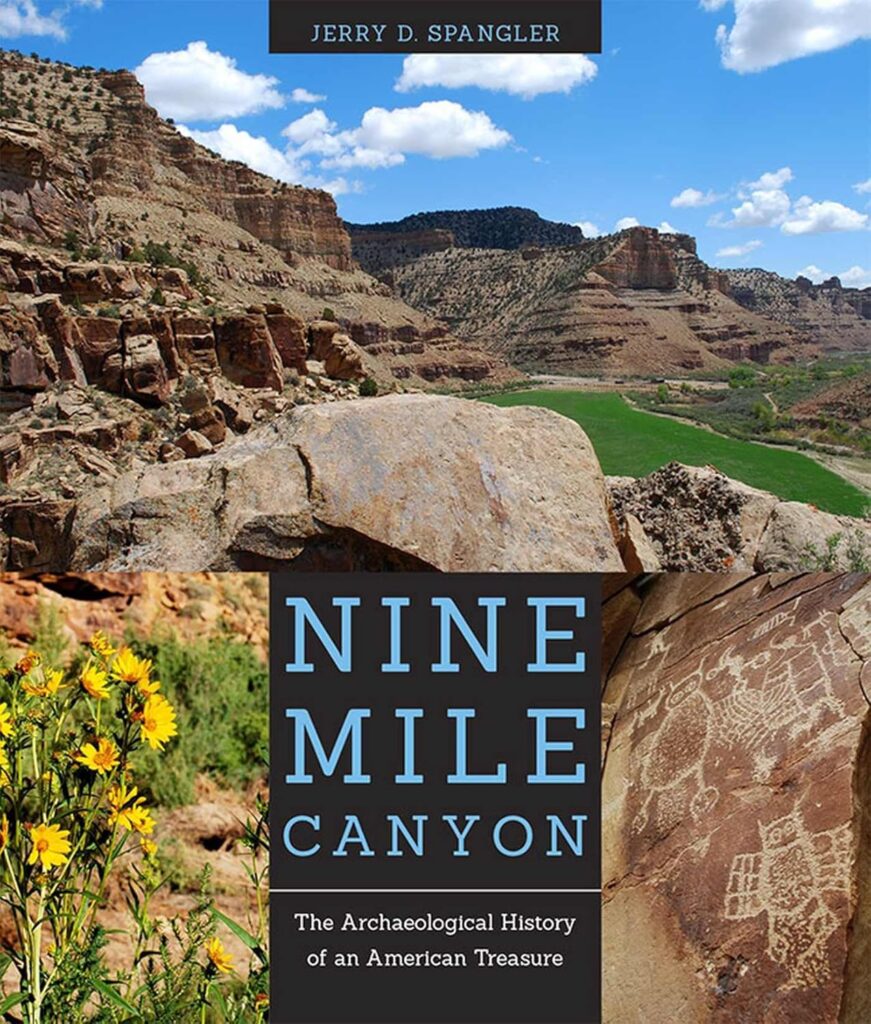
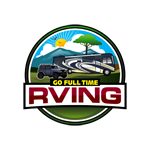
The Nine Mile Canyon looks like non-stopping fun: enormous number of petroglyphs just to start with. The dictionary lets us know that petroglyphs are engraving, and petrographs is painting on rocks instead. The place is located in the United States of America, state of Utah, city of Wellington. Some think immediately of this canyon when they see the expression ‘world’s longest art gallery’. It is 46 miles of petroglyphs…950 to 1,250 AD would be the date of creation of these drawings. They were made by the Fremonts, a pre-Columbian people. Looks like a not-to-be-missed point for archaeologists…congratulations to the author for making us go beyond their text.
Thank you for sharing this beautiful place with us. The rock paintings are amazing and so full of history. What was not amazing is the vandal that wrote over the art 🙁
This is an awesome way to travel and see history and take in the big skies and the beautiful animals.
You are truly blessed!
Thank you for your comments Janine. We have been lucky to see so many interesting places during our travels. We just happened to find out about Nine Mile Canyon which made this adventure even more special.
Do you have a literally hit the spot with this article. Utah is my favorite place in the United States to go to. I know a lot of people may not find a lot of interest in Utah but I personally do! I love going to Utah because of all the many different biomes that they are there. You have officially added to the list of places that I want to visit when I go there again
HI Misael, Thank you for your comments. Utah is one of my favorite places also. We lived in Las Vegas before starting our full time RVing lifestyle, so Utah was close and always a place we’d head for get-a-way weekends.
Thanks for sharing this information about Nine Mile Canyon. The area looks absolutely beautiful and breathtaking. It absolutely broke my heart to see that ancient artwork vandalized though. A sign nearby would have been more than enough to explain that it was private property. It is incredibly disrespectful to the Native Americans who created that art to plaster a “Private property” sign over what is rightfully their property. Absolutely barbaric, but I am glad you and your family had a great time despite the circumstances. I would love to go there myself some day.
Thank you for your comments Rachel! It is a really cool area. The list we got from the campground owner where we’re staying gave us a list of sites that had 80 locations in about 30 miles of road. We hit as many as sounded interesting. We couldn’t find a few of the sites and then found others that weren’t even on the list. It was an amazing day. If you get a chance to go there definitely do it.